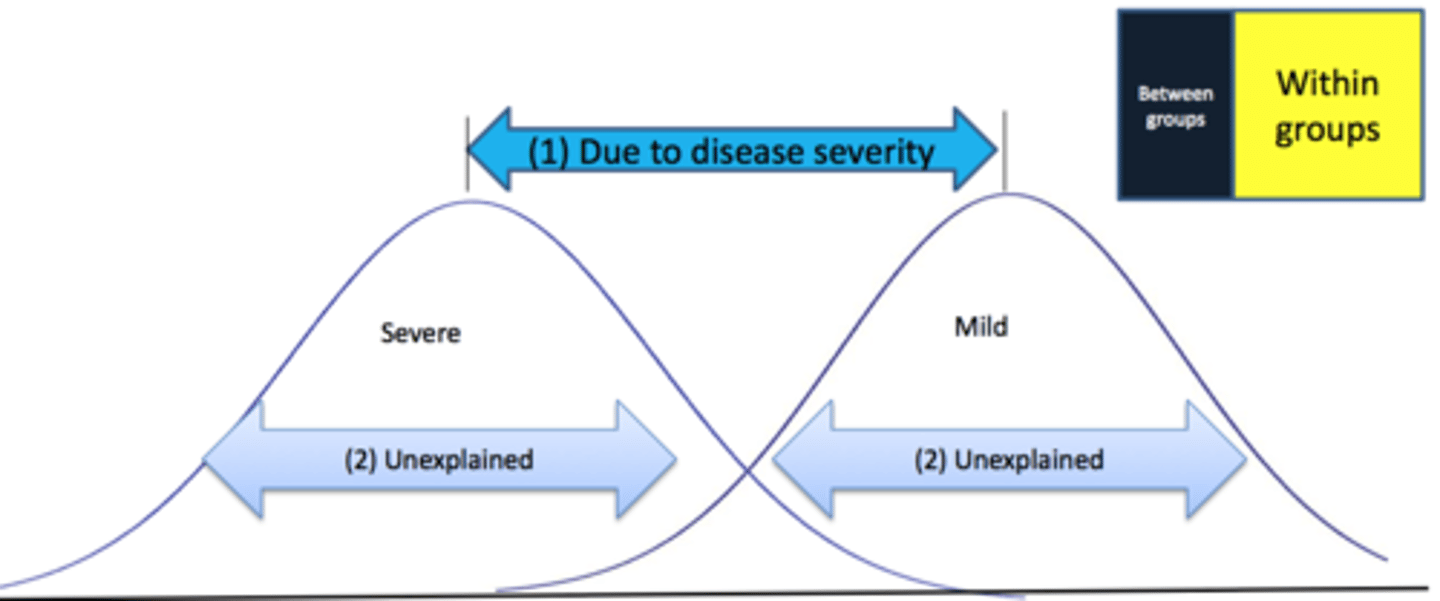comparing two means
1/18
There's no tags or description
Looks like no tags are added yet.
Name | Mastery | Learn | Test | Matching | Spaced |
|---|
No study sessions yet.
19 Terms
why can't you use multiple t-tests?
increase chance of type one error
t-test assumes that values of outcome variables are independd of each other, which is not true when you compare 3+ groups (1v2, 2v3, 1v3, etc.)
what test is used for comparing groups with more than two means?
analysis of variance (ANOVA)
what is the statistic of ANVOA
f-statistic
compared to critical value of F
how to calculate F
variance between samples (difference from treatment) / variance within samples (difference from error)
what is inferred with a small F value
clinical insignificance
if variance between samples is small F will be _____________________
small
if variance within samples is small F will be ___________________
large
assumptions for ANOVA
same as the rest of the parametrics ;)))
how do you test for homogeneity of variance for ANOVA
levenes!
variation within groups
except w/ 3 groups

what does the f statistic measure
measures if observed difference in a set of means greater than the difference expected by error alone
types of anovas
lots-- only covering one way anova
one way anova (separate groups for each intervention)
one way repeated measures anova (one group for each intervention)
Levine's test is significant when
p is less than .05
ANOVA's comparison of group means
ANOVA looks at distance of each group mean from grand mean and if the distance is statistically significant
omnibus test
overall, nonspecific test
aka f test-- tells you a difference exists but not WHERE it exists
what are multiple comparison tests
a test that tells you where the difference is if the F test states that a difference exists
pros of comparing means
removes time as an independent variable!
effect sizes of ANOVA
eta squared (most common)
small - .01
medium- .06
large- .14
cohen's f (1/2 value of t-test)
small- .10
medium- .24
large- .40
are variances equal?
levine's determines
to say that there is a difference, p needs to be less than .05
failure to reject null = equal variances